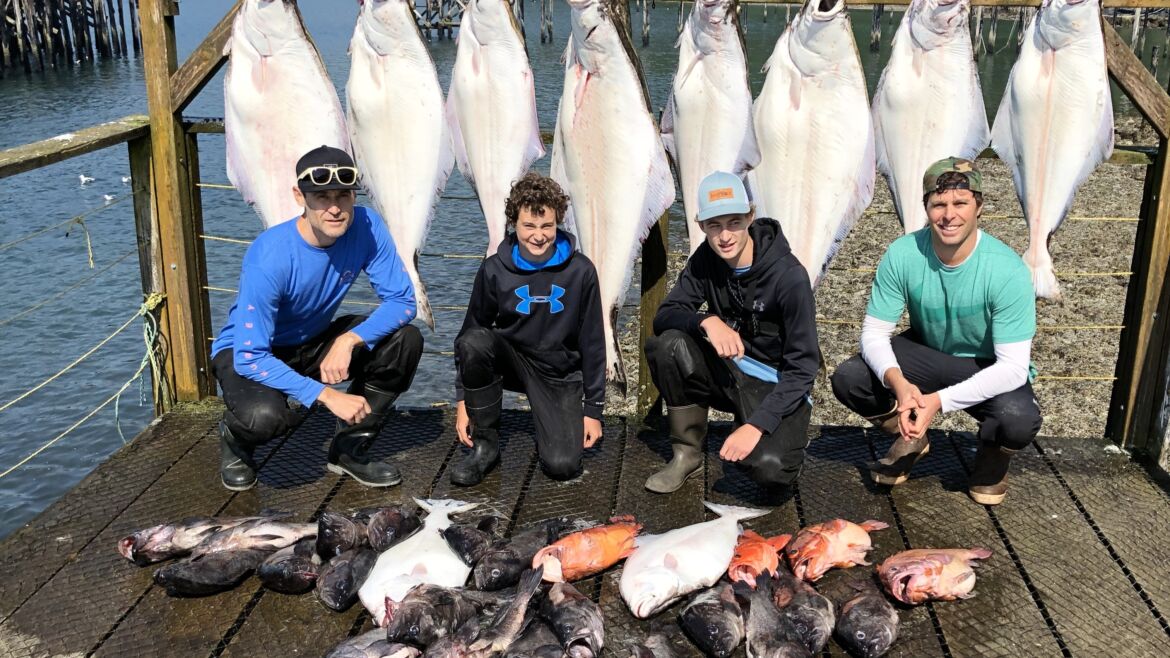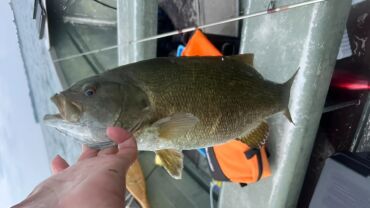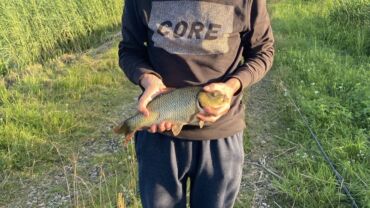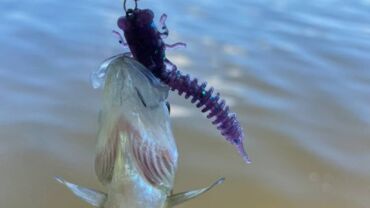Alaska being described as “The Last Frontier” couldn’t be a truer statement—especially with regards to fishing. Alaska is one of the few places left on this entire planet that hasn’t been ravaged by extreme commercial and environmental destruction which has allowed the fishery there to stay booming. As a result, fishing is a huge part of life in Alaska, not only due to the millions of locals who rely on the waters to feed themselves and their families, but also to the tens of thousands of anglers who flock there to take part in some of the best fishing in the world here every year. While Alaska is a great fishery just about year-round, there are various seasons that anglers should be aware of, so they know what to target and when to target a particular species.
Get your personalized fishing map
Answer a quick quiz and get your own personalized fishing map
Overview of Alaska Fishing Seasons
For the most part, fishing seasons in Alaska can still be broken down into 4 seasons like the rest of the year. While some species run across seasons, for the sake of organization and understanding, I’m still going to keep the seasons in terms of Winter, Spring, Summer, and Fall. While all the seasons have their pros and cons, Summer certainly stands out as the best and you will see why in a second—especially after seeing the chart below. I’m going to go into more detail month by month down below, but for now, I’m just going to give a super brief overview of each of the four seasons.
- Winter: Although very cold, Winter in Alaska can still offer surprisingly good fishing for the anglers bold enough to venture outside. Popular species in the Winter are Rainbow Trout, Dolly Vardon, Arctic Char, Arctic Grayling, Halibut, and especially Rockfish. For everything aside from the Halibut and Rockfish, a lot of anglers will try to reach these other species by ice fishing or finding unfrozen moving bodies of water if possible. Moreover, if you are fortunate enough to be able to make it into deeper waters such as bays, Halibut, and especially Rockfish should be firing and provide great action the entire Winter.

- Spring: As Spring comes around, the water begins to warm up and more species begin to start heating up throughout the state of Alaska. For the most part, the fishing between Winter and Spring doesn’t change all too much, however, there are a few species that start to pop out again. Some of these include the King Salmon and Sockeye Salmon towards the very end of Spring.
- Summer: Summer is the pinnacle of fishing action in Alaska as almost all species are biting like crazy. Not to mention the amount of active fishermen skyrocketed as people are more reluctant to get outside and this is also when most tourists plan their vacations to Alaska. As you can see from the chart, at some point in time during the Summer, fishing for every single species is at least good or great at some point. This allows anglers to have an unparalleled range of choices in terms of how they want to fish and what they want to fish for. This is why summer fishing in Alaska is such a hot topic.
- Fall: For the most part, action in the Fall continues to stay high. The weather is still pleasant enough to give anglers versatility in how they want to fish. One of the notable parts about Fall is there is a great offshore and nearshore fishery for great-eating bottom fish like Lingcod, Rockfish, and Halibut. Trust me, these species all put up great fights, but the table fair is seriously out of this world.
Read also: Unlocking the Secrets of Perfect Fishing Weather: Best Conditions for a Great Catch
I hope from just a little summary, you can see why Alaska has such a draw for anglers across the world. The fishing is unparalleled and thus any angler who has the opportunity should try and make a trip to Alaska and see what “The Last Frontier” has to offer. Check out the chart below for more information regarding the bite levels of different species across the months of the year.
Alaska Fishing Calendar
| Species | Jan | Feb | Mar | Apr | May | Jun | Jul | Aug | Sep | Oct | Nov | Dec |
| Arctic Char | Good | Good | Good | Good | Good | Great | Great | Great | Great | Great | Good | Good |
| Arctic Grayling | Good | Good | Good | Good | Great | Great | Great | Great | Great | Great | Good | Good |
| Dolly Varden | Good | Good | Good | Good | Good | Great | Great | Great | Great | Great | Good | Good |
| Rainbow Trout | Good | Good | Good | Great | Great | Good | Good | Good | Great | Great | Good | Good |
| Chum Salmon | Poor | Poor | Poor | Poor | Poor | Good | Great | Poor | Poor | Poor | Poor | Poor |
| Pink Salmon | Poor | Poor | Poor | Poor | Poor | Poor | Good | Great | Good | Poor | Poor | Poor |
| Coho Salmon | Poor | Poor | Poor | Poor | Poor | Good | Great | Great | Great | Great | Poor | Poor |
| Sockeye Salmon | Poor | Poor | Poor | Poor | Good | Great | Great | Good | Poor | Poor | Poor | Poor |
| King/Chinook Salmon | Poor | Poor | Good | Good | Great | Great | Good | Poor | Poor | Poor | Poor | Poor |
| Rockfish | Great | Great | Great | Great | Great | Great | Great | Great | Great | Great | Great | Great |
| Lingcod | Season Closed | Season Closed | Season Closed | Season Closed | Good | Great | Great | Great | Great | Great | Great | Season Closed |
| Halibut | Season Closed | Good | Good | Good | Great | Great | Great | Great | Great | Good | Good | Good |
Alaska Fishing Season Dates
Fishing in Alaska can look very different from month to month, for this reason, I’m going to break down fishing seasons in Alaska even further and give you a month-by-month summary of what is biting. Because Alaska has such a great diversity of fish species, it’s important to consider what you want to catch if you are planning a trip to Alaska. Using these months below and the information provided in the chart above, you should be able to plan a time to come to Alaska and target whatever species you want.
- January: In terms of Alaska’s standards for fishing, January is a pretty bad month. Cold water temperatures force every species of Salmon out and both Lingcod and Halibut are closed due to government regulations. However, there is still some good news. Fishing for Char, Grayling, Dolly Vardon, and Rainbow Trout can be rewarding—especially if you are willing to do some ice fishing. Additionally, if you have a means of making it into some deeper water in bays, the Rockfish are firing, and it won’t take too much struggle to catch quite a few of these guys. So, all in all, not a terrible month, but you still have to be willing to put on quite a few layers if you want to do some fishing.
- February: February is almost an identical month to January aside from temperatures in Alaska generally being a little bit warmer and the Halibut fishery opening which is very exciting. While fishing for Halibut isn’t quite “great”, the season opening allows anglers to plan a nice full day in the bays targeting Rockfish and Halibut.
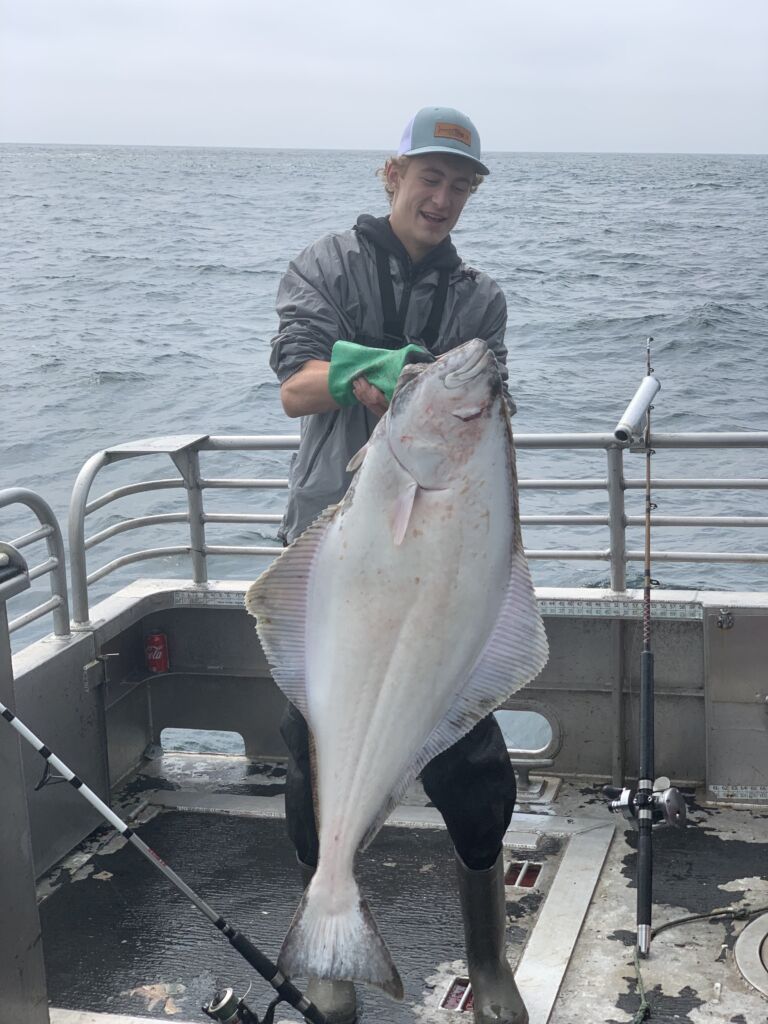
- March: Funny enough, March is also the same as February in terms of the different levels of bite. The only difference is that in March, the King/Chinook Salmon bite heats up. These Salmon offer an amazing challenge to catch them as well as excellent table fare so take advantage of this better bite.
- April: April is where anglers get their first glimpse of the kickoff of Alaska’s insane summer fishing months. Aside from warmer weather than the prior months, there are a few characteristic changes in the bite of certain fish. The offshore fishing certainly heats up a bit more and the Rainbow Trout enter their peak season. All this goes to show that even the “off” months in Alaska are far more productive than “off” months in other states.
- May: May is without a doubt the kickoff of the summer fishing rush in Alaska. A lot of species, especially Salmon, start to get into their annual runs and anglers flock from all over the world to take part in the action. Some notable things about May: Arctic Grayling fall into their best pattern of bite in the year, fishing for Lingcod opens, the Chinook Salmon bite fires up to full strength, and even the Halibut have one of their best bites of the year. All this goes to show that May marks the start of a very active time of year in the Alaskan waters.
- June: Just when you thought Alaska couldn’t get any better—it does. June (as well as July) marks the peak months of the year for fishing in Alaska across almost all species. The fishing for many species is so good that I don’t even have the time and space to describe it here. Just look at all the green on the chart and you tell me if June is when you should book a trip to Alaska or not. Funny enough, the one time I went to Alaska was in June and it lived up to my expectations and more. I certainly recommend this time of year for a trip and the chart supports that conclusion.
- July: While June is certainly amazing, somehow July figured out how to one-up it. The fishing for every single species, all Salmon included, is at least good or great. This gives huge versatility in how you want to spend your days on the water. Honestly, I remember one of my favorite parts about Alaska was the Salmon runs. We were there during the Pink Salmon run (they run every other year. Ex. 2024,2026, etc.). If you get to go to Alaska, make sure you plan your trip during the run of at least one Salmon species and you will not regret it.
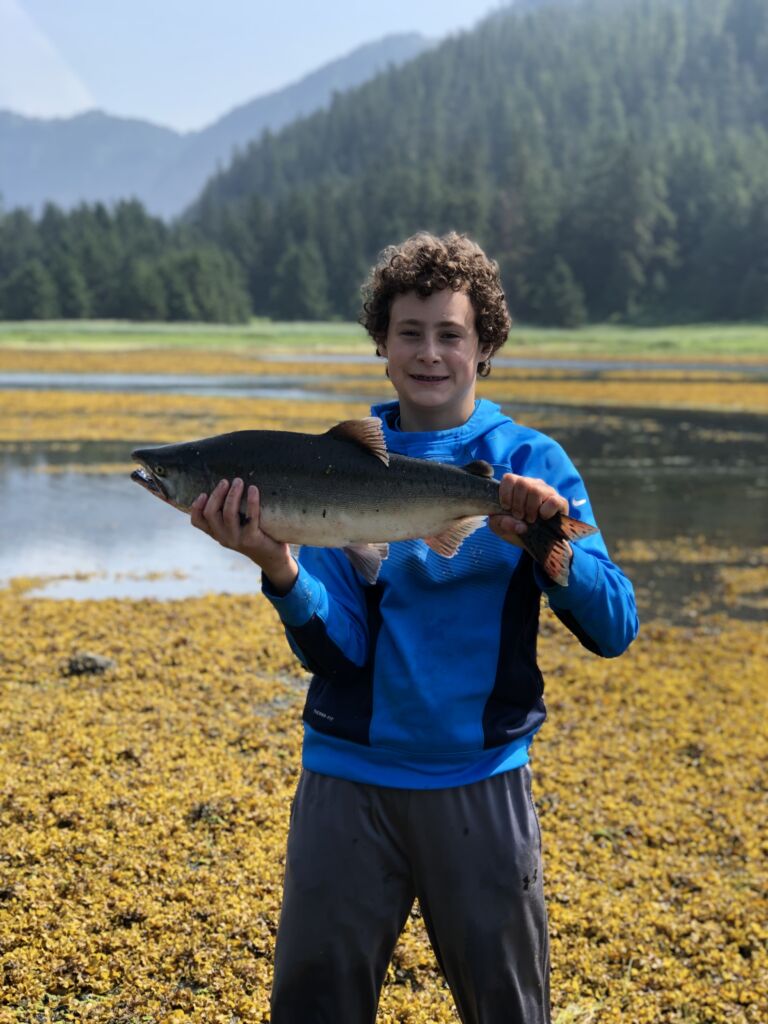
- August: While August is still a very hot month, both in terms of temperature for Alaska and for the fishery, it does mark the start of the decline of the fishery as we move towards Fall and Winter. The only notable difference from the other summer months is that Chum and Chinook Salmon seem to fade. Other than that, the bite stays the same or gets a bit better like in the case of Pink Salmon. However, the reason I would still argue July is better is just because almost every species in Alaska is fairly easy to catch and open in season.
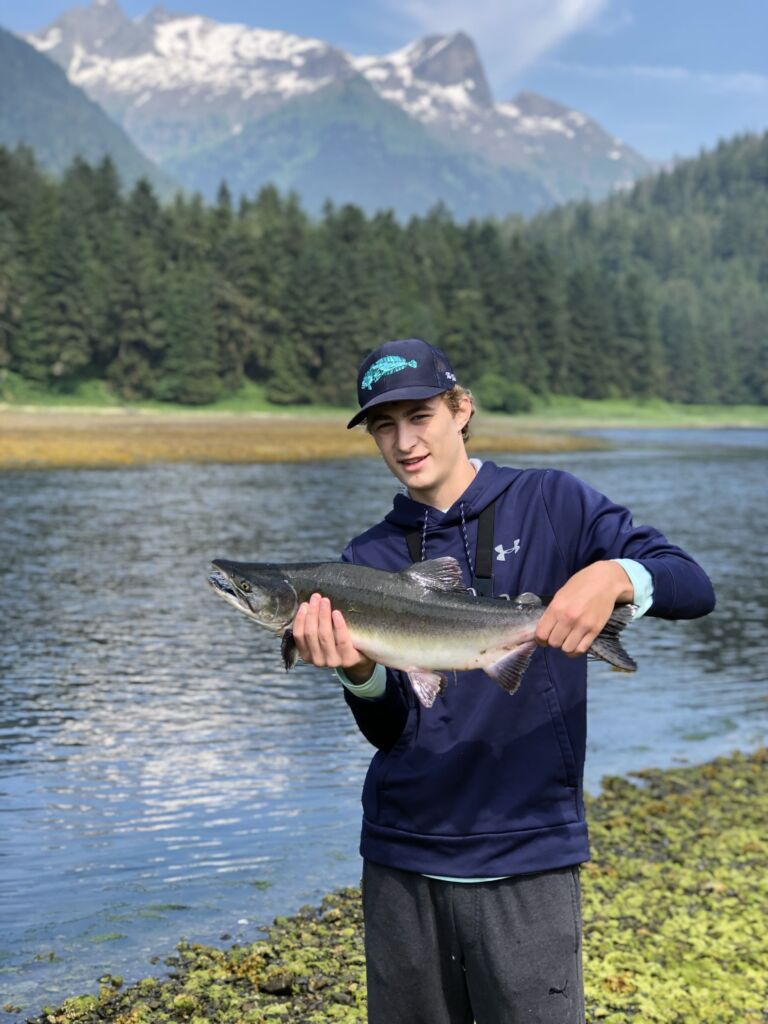
- September: Again, I know I said August marked the start of the decline in the bite in Alaska, but the bite is still remarkably good until October. With temperatures beginning to wind down, the Pink Salmon begin to vacate the waters of Alaska and the bite can become poor quickly. However, the offshore fishery with Halibut, Rockfish, and Lingcod is still one of the best bites of the year in addition to some lingering Salmon species like Coho.
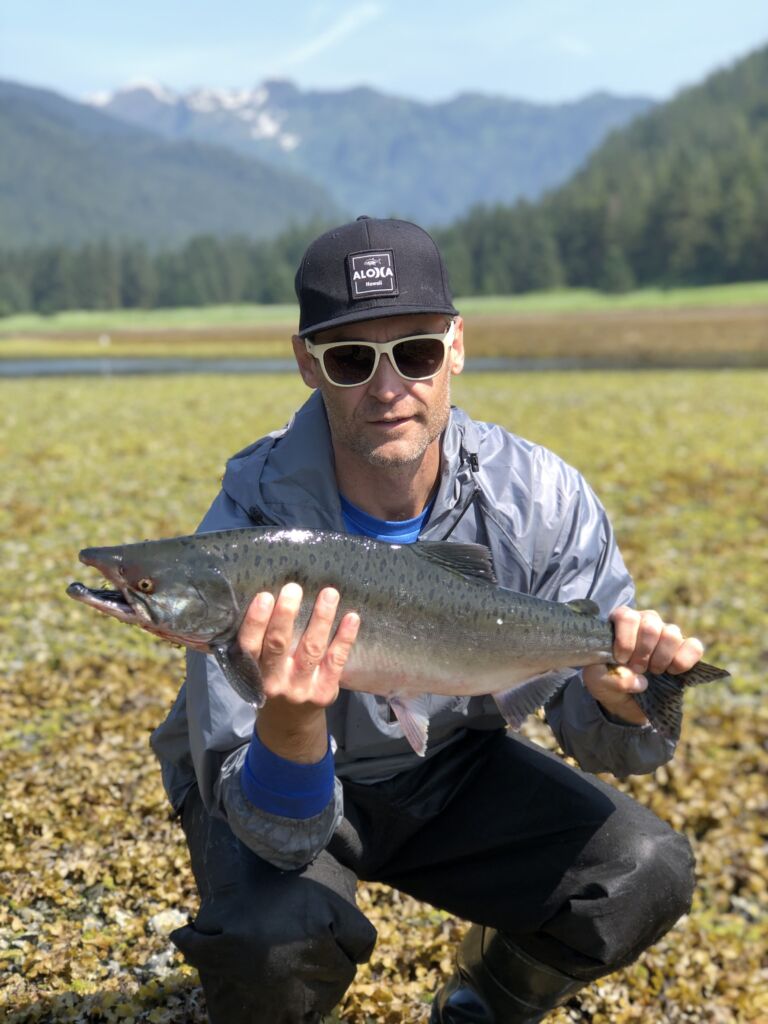

- October: October is definitely the last month of the year when the bite is still good across the board for most species in Alaska. While the Salmon fishery has almost completely died and the Halibut bite begins its sharp decline, tons of other species are still ready to bite including Lingcod, Rockfish, Arctic Char, Arctic Grayling, and Rainbow Trout.
- November: This is when fishing gets pretty tough for most anglers across the state. Temperatures plummet and daylight dwindles making anglers hard-pressed to get outside. The bite for a lot of species is in a significant decline or completely gone outside of Rockfish and Lingcod. This being said, take advantage of bays if you have access to them, and fill a cooler with some delicious meat.
- December: I’m not even gonna try and lie to y’all, December is a hard month to be fishing in Alaska considering all that it has offered in past months. The only species that continues to bite great during this month is the Rockfish, which, if you haven’t noticed, bites great all year long. Temperatures and daylight make fishing hard but if you want to just feel a tug, Rockfish are your best bet.
Read also: Fishing in Cold Weather: Tips and Techniques for Winter Anglers
I hope this month-by-month summary of fishing in Alaska will help give you guys some guidance on when to go fishing there and more specifically plan trips there. From personal experience and the experience and stories of many others across the web, you’re going to want to book a trip in the summer months as they offer the best combination of weather and bite for the most enjoyable experience. However, I understand this may not be a time that can work for all people and hopefully, you can use this chart to see that there are plenty of other good times during the year.
Top Fishing Destinations in Alaska
While the entire state of Alaska is very good for fishing, there are certainly a few places that stand out from others. First let’s talk about a few rivers like the Kenai River, Kasilof River, and the Copper River Delta. These three rivers, along with many others, provide anglers ample opportunity to catch trophy Chinook Salmon, Rainbow Trout, and Dolly Varden in the Kenai River, huge Chinook Salmon in the Kasilof River, and a variety of Salmon and Trout species in the Copper River Delta (which I have been to myself). Next, let’s talk about lakes. Two of the most popular are Mendenhall Lake and Chilkoot Lake. Mendenhall Lake provides ample opportunity for anglers of all types, fly-fishermen included, to catch species like Pink, Chum, and Coho Salmon as well as Cutthroat and Rainbow Trout. What makes it so special is the amazing fishery and scenery due to the huge glaciers around the lake. Chilkoot Lake is also very special as it provides a similar fishery to Mendenhall Lake yet is more known for its frequenting bears as opposed to glaciers. Both of these lakes make awesome opportunities to get out and enjoy God’s creation through fishing and the scenery.
Read also: Unveiling the Secrets of Freshwater Fishing: A Guide to the Best Lures
Lastly, let’s talk about some popular coastal areas. Some of the most popular include Kodiak Island and Bristol Bay. Kodiak Island boasts great fishing for all five Salmon Species and still offers great fishing offshore for Halibut, Rockfish, and Lingcod when in season. Similarly, Bristol Bay offers a great Salmon fishery, as well as the “largest Sockeye Salmon run in the world”.
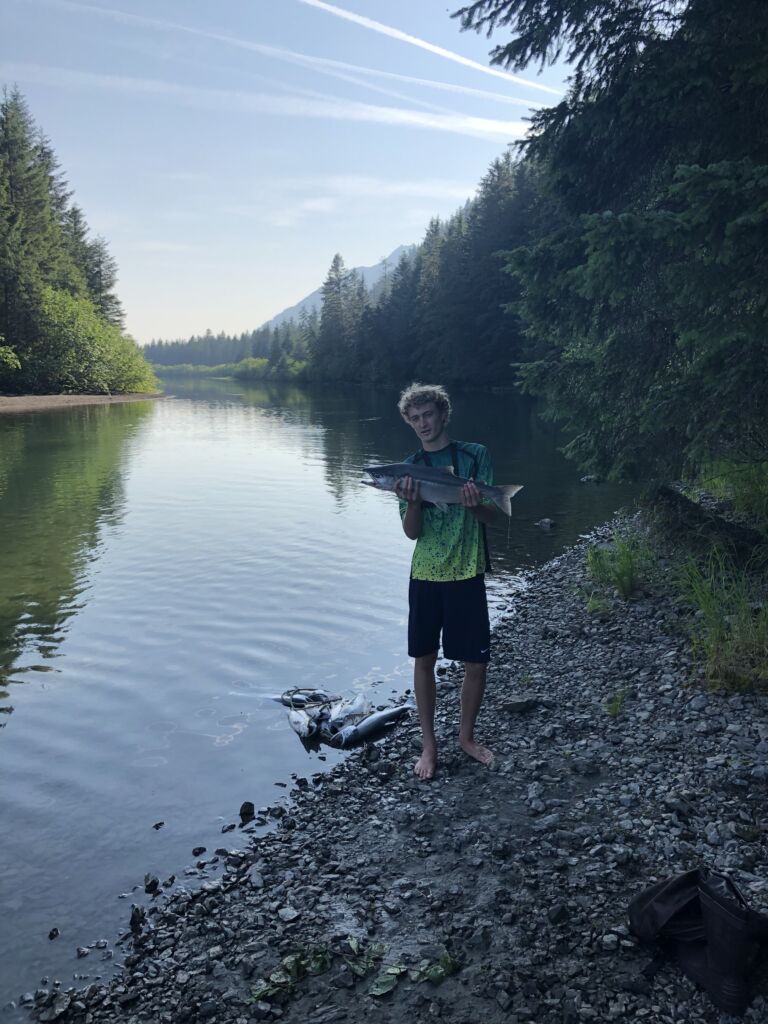
Alaska Fishing Regulations and Permits
Because Alaska is such a monstrous state with so much area and water to fish, there are a staggering number of regulations in the fishing industry. So much so that it’s not even worth trying to break all of them down for you because they depend so heavily on both where and when you’re going to Alaska. However, this link should allow you to find the information you need regarding fishing licenses, seasons, and bag limits in Alaska. Now I know the last thing you want to hear about is fishing licenses and conservation practices—but it simply cannot be ignored because of how important they are. When I say this, I mean this completely, Alaska is one of the last places, if not the last place, on this Earth where the natural environment and fishery haven’t quite been completely screwed up by us humans. This is due in large part to the rigorous instructions and regulations that anglers must follow to fish here. So let’s keep Alaska amazing and abide by the rules the government wants us to follow.
Fishing Gear and Techniques
This is a very interesting topic, specifically about fishing in Alaska because of the immense diversity of species that call it home. There are so many different techniques and gear that you could use so it’s very hard to go into detail about these without writing a whole different article just on this one section. I will summarize by saying that your gear and tactics will all depend on where you are fishing when you are fishing, and what you’re fishing for. Just take this one example. You can fish for different types of Salmon in a variety of ways in Alaska—trolling, fly fishing, casting, ice fishing, and more. Each of these scenarios requires different gear and techniques depending on the situation. Keep in mind that this doesn’t even account for the variation in size between Salmon species that would require you to scale up or scale down your tackle. So, I’m going to close this section by saying this: You’re going to have to figure out what you want to do before you go if you are fishing by yourself. You need to research your target species and the gear you need to give you your best chance at landing that fish. If you want to eliminate this stress, I would highly advise booking a guided trip where the gear is provided. This is the advice I would give y’all regarding gear.
Get your personalized fishing map
Answer a quick quiz and get your own personalized fishing map
Tips for a Successful Fishing Trip
Plan, plan, and plan. You need to know what you want to do before you go yet still be open to a little bit of change. If you show up to Alaska in the middle of the Summer and don’t know what to target, you’re going to be at a loss for what you want to do because so much is available. To avoid this issue either book a longer trip where you can cover all your bases or pick out a few species that are in season that you would like to target. At the same time, don’t be afraid to let the guides and locals tell you what’s best. After all, they live there so their advice is worth far more than anything that can be found on the internet. So, have some goals in mind for a successful fishing trip, but be willing to change and adapt as your guides and locals see fit. The last thing I would recommend just from personal experience is to book a trip to an actual fishing lodge. This gives you a great range of choices for what you want to do and all the captains and guides necessary to make it happen. The lodge I personally went to was Orca Adventure Lodge in Cordova, Alaska and we had a blast. All the pictures you see in this article are from that trip.
Conclusion
I hope this article provides some clarity on how you should approach fishing in Alaska. As you can tell there is certainly a ton you can do and fish for, but don’t let that get to your head. Try to simplify your trip if you can and it will make for a far better fishing experience. Additionally, rely on research and information, the likes of which can be found in this article and others. Moreover, I would highly recommend the Fishbox App to complement your research. It will provide scientific data based on a variety of metrics that will give you as the angler a better way to tell what you should be targeting. This comes in huge when going to a fishery as amazing as Alaska. So don’t wait any longer and download the fishing app today. I hope you all one day get to experience the raw beauty of Alaska like I did a few years ago. I never once in my life felt like I was closer to God when seeing a part of His creation. This being said, enjoy His creation and don’t abuse what He has given us. Tight lines!
Photo Source: All photos in this article were provided by expert Pierce Latta.
Visit his Instagram profile.
Subscribe to his YouTube channel.
